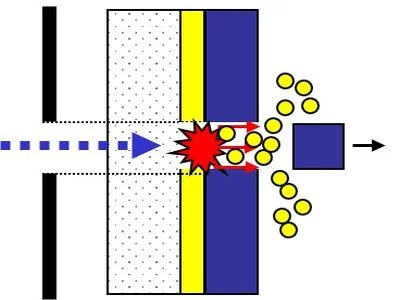Abstract:
In conjunction with the increasing availability of cost-efficient laser units during the recent years, laser-based micromachining techniques have been developed as an indispensable industrial instrument of ‘‘tool-free’’ high-precision manufacturing techniques for the production of miniaturized devices made of nearly every type of materials. Laser cutting and drilling, as well as surface etching, have grown meanwhile to mature standard methods in laser micromachining applications where a well-defined laser beam is used to remove material by laser ablation. As an accurately triggerable nonmechanical tool, the ablating laser beam directly allows a subtractive direct-write engraving of precise microscopic structure patterns on surfaces, such as microchannels, grooves, and well arrays, as well as for security features. Therefore, laser direct-write (LDW) techniques imply originally a controlled material ablation to create a patterned surface with spatially resolved three-dimensional structures, and gained importance as an alternative to complementary photolithographic wet-etch processes. However, with more extended setups, LDW techniques can also be utilized to deposit laterally resolved micropatterns on surfaces, which allows, in a general sense, for the laser-assisted ‘‘printing’’ of materials.
Keywords: laser induced forward transfere; laser direct-write techniques; high-precision manufacturing; laser-assisted printing;
Facility: ENE, EMPA, LMX, Thin Films and Interfaces
Reference: M. Nagel, T. Lippert, Laser-induced forward transfer for the fabrication of decives, in Nanomaterials; Processing and Characterization with Lasers, Eds. H. Zeng, C. Guo, W. Cai, S. C. Singh, Wiley-Blackwell, John Wiley & Sons Publishers, Weinheim, pp. 255-316, 2012.
Read full article: here
Facility: ENE, EMPA, LMX, Thin Films and Interfaces
Reference: M. Nagel, T. Lippert, Laser-induced forward transfer for the fabrication of decives, in Nanomaterials; Processing and Characterization with Lasers, Eds. H. Zeng, C. Guo, W. Cai, S. C. Singh, Wiley-Blackwell, John Wiley & Sons Publishers, Weinheim, pp. 255-316, 2012.
Read full article: here

